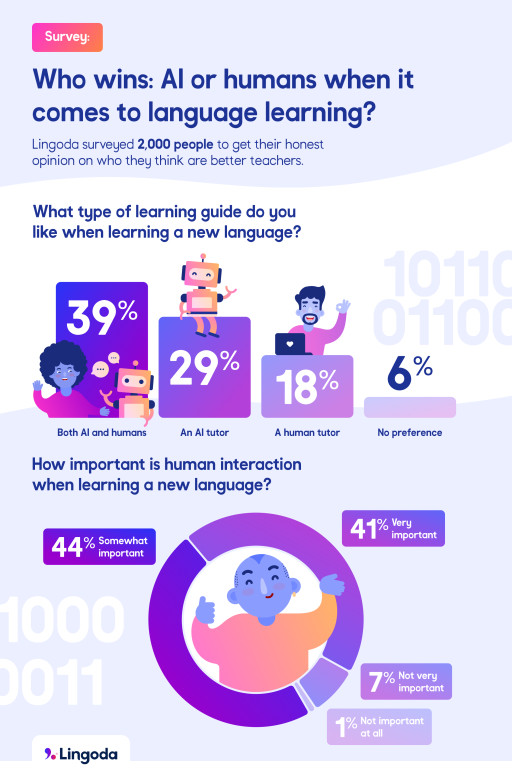A recent survey conducted by the British Council in collaboration with the Research Institute of Digital Innovation in Learning sheds light on English language teachers’ perspectives regarding integrating artificial intelligence (AI) in language learning. The survey, titled “Artificial intelligence in English language teaching: Preparing for the future,” garnered responses from 1,348 English language educators spanning 118 countries and regions worldwide.
Teacher insights on AI integration
Contrary to concerns that AI and automated translation could render language learning obsolete, 60 percent of English-speaking teachers disagree with this notion. Many emphasized the cultural, social, and emotional dimensions of language learning, underscoring the irreplaceable value of human interaction in the process.
Moreover, a substantial majority (70 percent) of respondents believe that students should be able to write in English without relying on AI tools. This underscores the enduring importance of developing language skills despite technological advancements.
Despite the growing presence of AI in education, 51 percent of respondents express skepticism about AI’s ability to replace human educators by 2035. They emphasize the indispensable role of teachers in guiding and facilitating language learning, highlighting the personalized support and nuanced understanding of learners’ needs that human instructors provide.
The survey also revealed significant uncertainty among English language teachers regarding their preparedness to integrate AI into their teaching practices. Only 20 percent of respondents feel adequately trained to utilize AI tools, while a majority (54 percent) perceive their training as inadequate. This underscores the pressing need for comprehensive training programs to equip educators with the necessary skills and knowledge to leverage AI effectively in language teaching.
AI tools and usage in language teaching
The survey examined the usage of AI-powered tools among English language teachers, revealing common applications such as language learning apps, language generation AI, and chatbots. However, a notable proportion (24 percent) of respondents reported not using AI tools, suggesting potential barriers such as lack of familiarity or access to technology.
Among the surveyed teachers, AI is predominantly utilized to create materials, facilitate English language practice for learners, and develop lesson plans. Nevertheless, a significant minority (18 percent) indicated that they did not employ AI for these purposes, underscoring the variability in its adoption and integration across different teaching contexts.
The survey findings reflect a nuanced and diverse range of perspectives among English language teachers regarding integrating AI into language learning. While some emphasize the enduring value of human interaction and personalized instruction, others recognize the potential of AI to enhance efficiency and inclusivity in language teaching.
Addressing the training needs of educators and exploring innovative ways to integrate AI responsibly are crucial steps towards harnessing its benefits while preserving the essential role of human educators in language learning.





